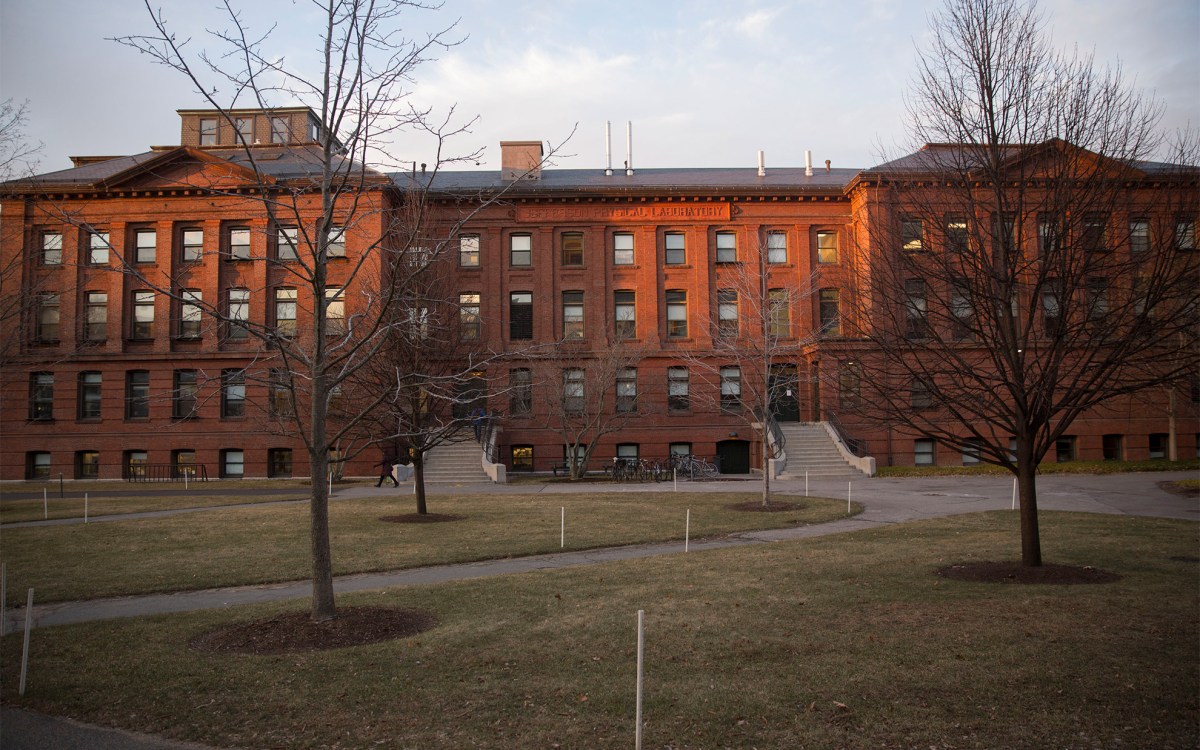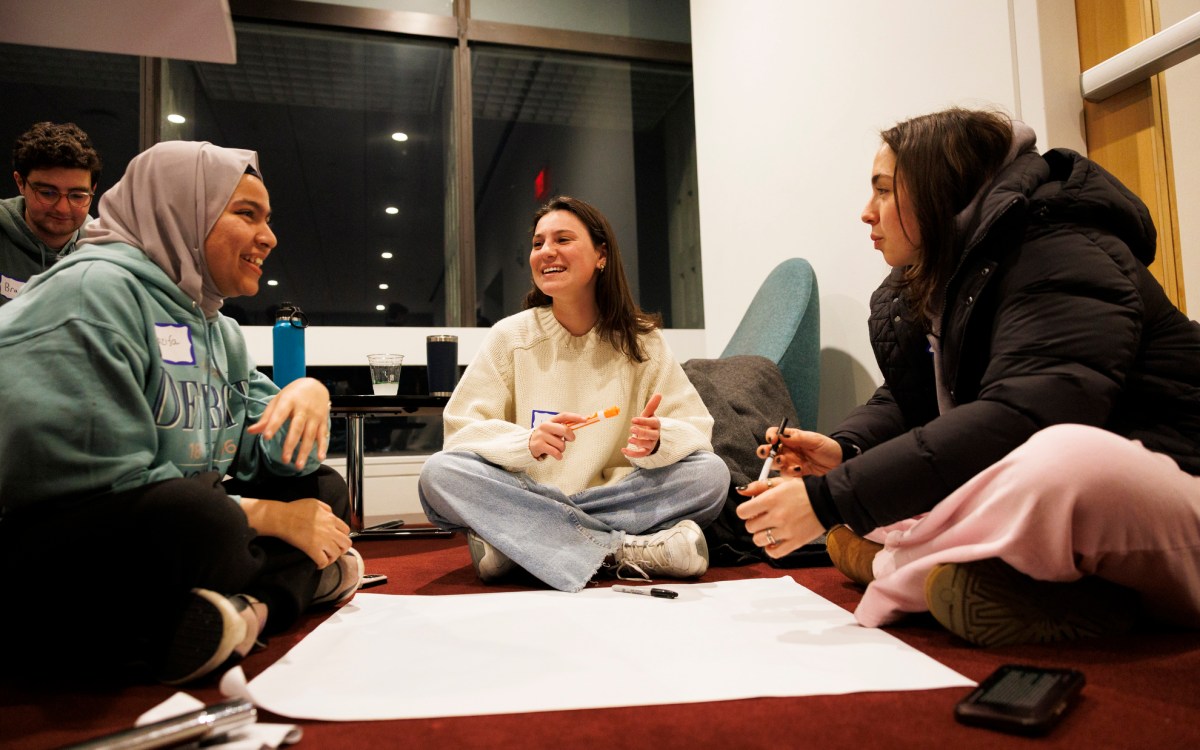Disabilities Act goes only so far, says HLS’s Bagenstos
Fourteen-year-old law ‘important’ but ‘insufficient’
When it passed in 1990, the Americans with Disabilities Act (ADA) enjoyed overwhelming support in Congress and widespread public favor. Everyone, it seemed, thought discriminating against people with physical or mental disabilities was a lousy idea.
And in its 14-year history, the statute has effected some very positive changes in our nation’s attitudes toward and acceptance of people with disabilities.

Building codes now mandate accommodations like ramps and elevators for people with mobility impairments. People with physical or mental disabilities are far more visible and integrated into society than in past generations, when they were largely tucked out of sight in institutions and nursing facilities.
“I think it was a good law, and I think it’s been an incredibly important law,” says Samuel Bagenstos, assistant professor at Harvard Law School (HLS) and an expert in the area of disability law. “But it’s insufficient.” Noncompliance with the ADA, he says, is widespread: In nearly 90 percent of employment discrimination lawsuits, the employer has won. People with disabilities are employed at about the same rate as they were before the law passed in 1990.
In the classroom and the courtroom, Bagenstos explores the disconnect between the goals of disability rights advocates – broadly defined as full integration of and independence for people with disabilities – and the legal statutes enacted to help achieve those goals. His work took him to the Supreme Court last month, where he prepared the plaintiff’s brief for a case concerning access for people with disabilities to state facilities (in this case, several courthouses in Tennessee).
“The broad issue is whether Congress had the power to enact the Americans with Disabilities Act, and specifically the part of the ADA that governs what state governments do,” says Bagenstos, who won’t learn of the court’s decision for several more months. “Can Congress guarantee people the right to have access to the courts of justice in their states in order to vindicate whatever their interests are?”
Access to justice
In State of Tennessee v. George Lane, Beverly Jones, and United States of America, George Lane, a criminal defendant who uses a wheelchair, was required to appear for an arraignment on the second floor of a courthouse. Because the courthouse had no elevator, Lane got out of his wheelchair and crawled up the stairs on his hands. When he refused to crawl up the stairs for a second arraignment several weeks later, he was arrested for failing to appear in court.
“He was required to go to the courtroom and really physically couldn’t make it there without pain, humiliation, and serious risk of injury,” says Bagenstos, adding that the other plaintiffs faced similar hardships. While Lane’s plight is dramatic, it’s not isolated: Since 1990, there have been more than 100 incidents similar to this one in which a person with a disability could not gain access to the seats of justice.
Bagenstos expresses only cautious optimism about the Jan. 13 Supreme Court hearing. “The Supreme Court has been cutting back on Congress’ power to enact civil rights legislation,” he notes, and the court has consistently interpreted the statute far more narrowly than its creators intended and its advocates hope for.
This “judicial hostility,” as he calls it, and other roadblocks to the ADA are due to a complex set of factors. Some are practical. Because damages are rarely awarded in disabilities rights cases, it’s difficult to attract lawyers, who are usually paid a percentage of damages, to these cases. “ADA plaintiffs can’t engage the most sophisticated counsel,” says Bagenstos.
Other impediments are philosophical. Courts resist efforts to interfere in the way employers set up their enterprise, he says, and many ADA cases request accommodations of employers. He adds that the ADA has been far more successful in securing employment rights of people who faced discrimination largely because of stigmatization – the person with asymptomatic HIV who was denied a job due to an irrational fear of infection, for instance, or the person who uses a wheelchair and was assigned to “back-office” duties for fear she would make customers uncomfortable – than in forcing employers to alter tasks, equipment, or schedules of employees whose disabilities demanded accommodations.
Further, because the ADA describes discrimination as not simply treating people differently but as failing to provide them with access and accommodations, its mandates may be expensive, whether for an employer who’s asked to grant an employee a flexible schedule or a century-old Tennessee courthouse with no elevator.
“In a world where we’ve constructed our buildings and our social institutions without taking account of people with disabilities, to undo that … will cost a not insignificant amount of money,” says Bagenstos.
A critical look at the ADA
At the same time Bagenstos, Esq., works to secure the rights of people with disabilities – the former lawyer for the U.S. Department of Justice has been involved in several Supreme Court disability rights cases, including the well-publicized case of golfer Casey Martin – Professor Bagenstos casts a critical eye on the issues surrounding the rights of people with disabilities.
“A lot of people have generally favorable feelings for people with disabilities and are happy to do something for them, but have difficulty seeing accommodations as a matter of right and have difficulty providing those accommodations when it becomes costly to do so,” he continues. And while the disabilities rights movement has tried to frame the debate in terms of rights rather than charity, they have “failed to make that idea really penetrate peoples’ consciousness,” Bagenstos says.
Notwithstanding the ADA’s successes and limitations, factors outside the legal system, such as the structure of health insurance and other social welfare issues, have significant impact on the independence and integration of people with disabilities. “The disability rights movement has in some ways oversold the ability of an anti-discrimination law like the ADA to achieve independence and integration,” Bagenstos says.
What’s more, one need only to look to the Civil Rights Act of 1964 to see that anti-discrimination legislation does not end discrimination. Recognizing the limitations of the Americans with Disabilities Act, which is more ambitious than the Civil Rights Act, could ultimately advance the lives of people with disabilities.
“Deep structural inequalities in society can’t be completely eliminated by civil rights legislation,” Bagenstos says. “Improving the position of a very disadvantaged class requires more than just a legal prohibition of discrimination.”




